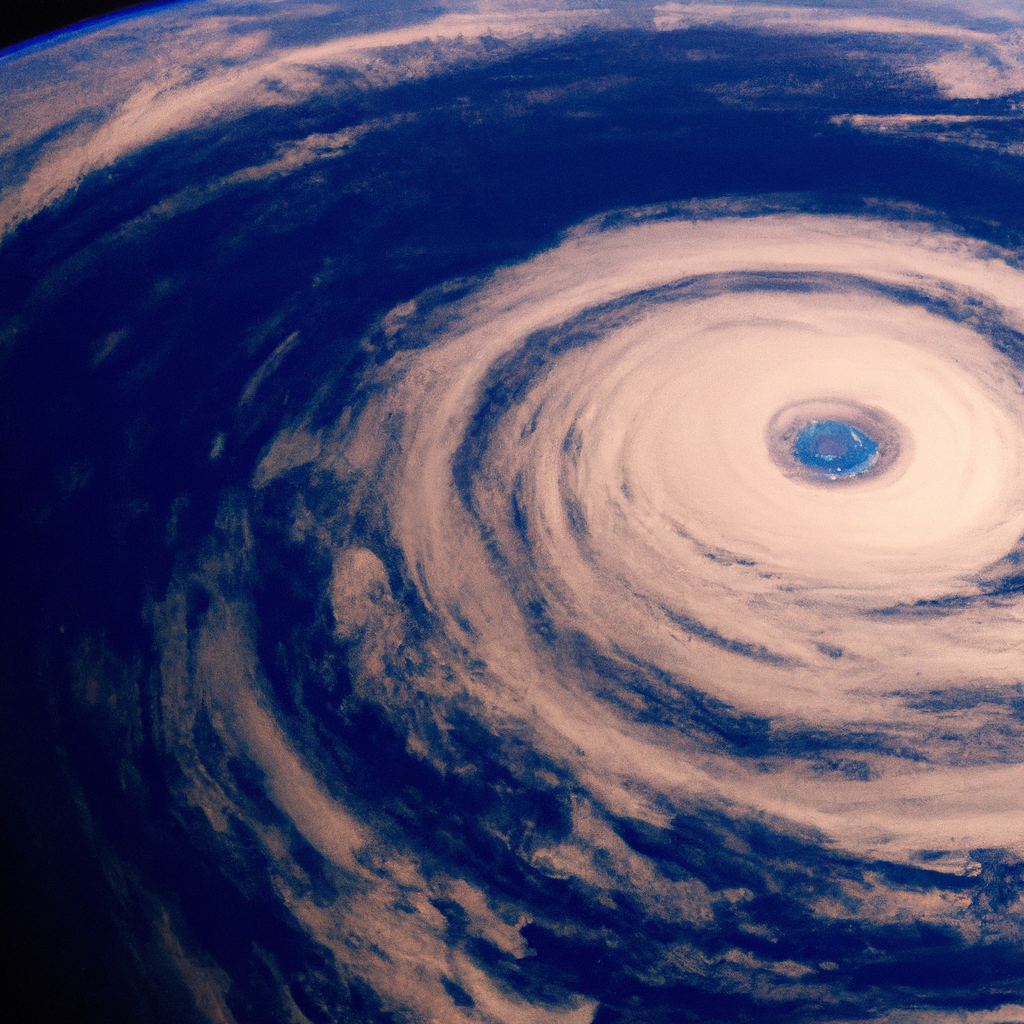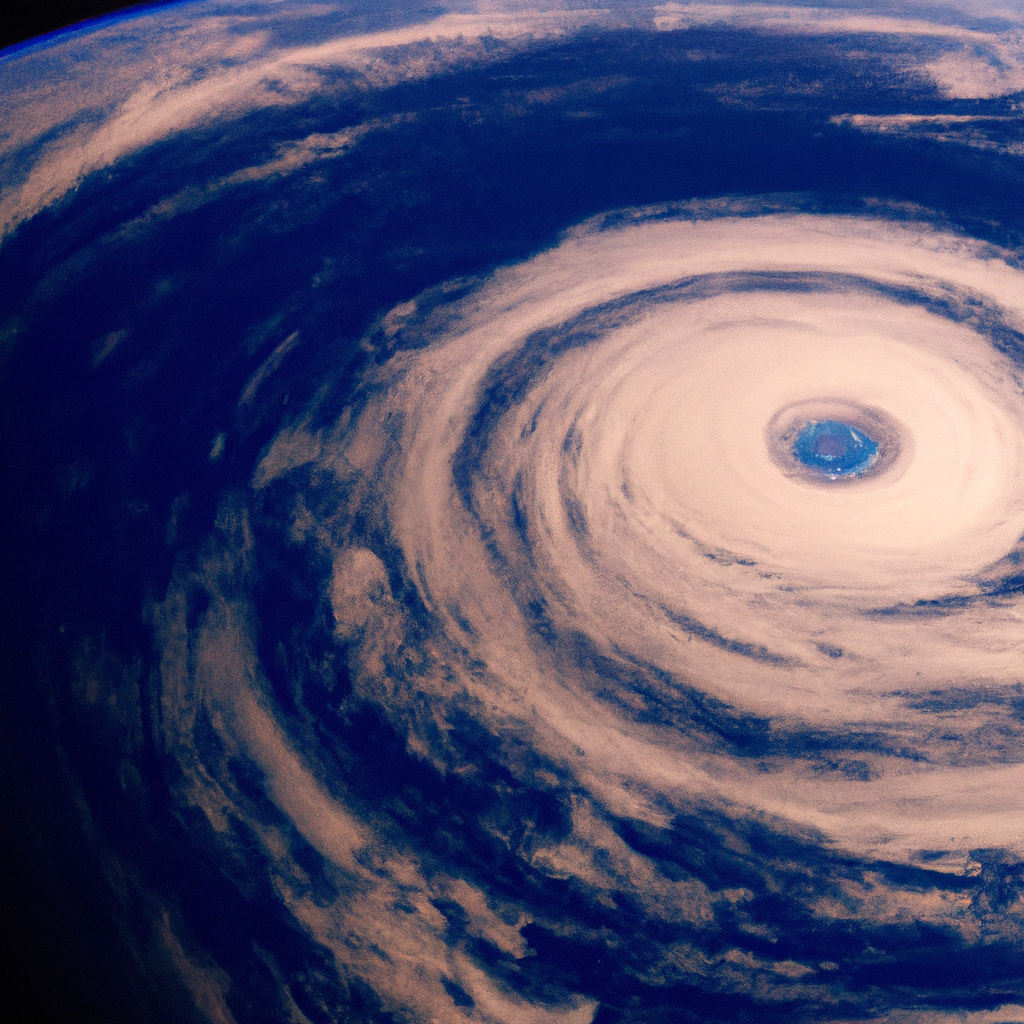What Are The Harmful Effects Of Ozone Layer Depletion: Introduction
Imagine a world where the Earth’s protective shield, the ozone layer, is slowly thinning away. Sounds like a sci-fi plot, right? Unfortunately, this is a pressing environmental issue that goes beyond fiction. Ozone layer depletion poses a multitude of harmful effects, from increased risks of skin cancer and cataracts to disrupted ecosystems and reduced crop yields. In this article, we will explore the consequences of this environmental concern and shed light on the importance of preserving our ozone layer.
What Are The Harmful Effects Of Ozone Layer Depletion: Increased UV Radiation
The depletion of the ozone layer has resulted in increased levels of ultraviolet (UV) radiation reaching the Earth’s surface. This can have several harmful effects on both human health and the environment.
1.1 Skin Cancer
One of the most significant consequences of increased UV radiation is the higher risk of developing skin cancer. UV radiation damages the DNA in skin cells, leading to mutations that can eventually result in the formation of cancerous cells. Skin cancer, including melanoma, is the most common cancer globally, and prolonged exposure to UV radiation is a major contributing factor.
1.2 Cataracts
Excessive exposure to UV radiation can also lead to the development of cataracts. Cataracts cause clouding of the lens in the eye, resulting in blurred vision and, in severe cases, blindness. Continuous exposure to UV radiation increases the risk of developing cataracts, emphasizing the importance of protecting the eyes from excessive sunlight.
1.3 Weakened Immune System
The immune system plays a crucial role in protecting the body from infections and diseases. However, increased UV radiation can weaken the immune system’s ability to function effectively. Studies have shown that UV radiation can suppress immune responses, making individuals more susceptible to various illnesses and reducing their ability to fight off infections.
1.4 Sunburns
Exposure to high levels of UV radiation can cause sunburns, which are characterized by red, painful, and inflamed skin. Sunburns not only cause immediate discomfort but can also lead to long-term damage, including premature aging, wrinkles, and an increased risk of skin cancer. Individuals with fair skin are particularly vulnerable to sunburns and must take precautions to minimize their exposure to UV radiation.
1.5 DNA Damage
UV radiation is capable of damaging the DNA in cells, affecting their normal functioning and potentially leading to mutations. DNA damage can have widespread implications, including the development of various cancers and genetic disorders. Cells rely on accurate DNA replication and repair mechanisms, but excessive exposure to UV radiation overwhelms these processes, increasing the risk of cellular abnormalities.
What Are The Harmful Effects Of Ozone Layer Depletion: Environmental Impact
The depletion of the ozone layer also has a significant environmental impact, affecting various ecosystems and biodiversity.
2.1 Crop Damage
Increased UV radiation can negatively impact agricultural productivity. Plants are sensitive to UV radiation and can sustain damage to their DNA, proteins, and lipids when exposed to high levels. This can result in reduced crop yields, stunted growth, and decreased nutritional value in food crops. The agricultural sector relies heavily on healthy and productive crops, and the potential damage caused by increased UV radiation poses a significant concern.
2.2 Reduced Productivity of Phytoplankton
Phytoplankton, microscopic plants that form the foundation of marine food chains, are also susceptible to the harmful effects of increased UV radiation. These organisms play a vital role in carbon fixation and oxygen production, contributing to the overall health of marine ecosystems. UV radiation can inhibit the growth and productivity of phytoplankton, disrupting the balance of marine ecosystems and impacting the survival of various marine species.
2.3 Disruption of Ecosystems
The depletion of the ozone layer can disrupt ecosystems by altering the balance of species interactions and population dynamics. UV radiation can directly harm organisms, leading to reduced survival rates and reproductive success. This disruption can have cascading effects on ecosystems, as changes in one species can affect the entire food web. The loss of certain species can disrupt crucial ecological processes, including nutrient cycling and pollination, with potentially far-reaching consequences.
2.4 Reduction in Biodiversity
The combined effects of increased UV radiation on various organisms and ecosystems can result in a reduction in biodiversity. Species that are particularly sensitive to UV radiation may decline in numbers or even become extinct. This loss of biodiversity not only impacts the beauty and diversity of the natural world but also has practical implications, as ecosystems provide valuable services such as water purification, climate regulation, and disease control.

Check Out Our Top Eco Friendly Product Picks On Amazon Here
What Are The Harmful Effects Of Ozone Layer Depletion: Effects on Climate Change
The depletion of the ozone layer can also contribute to climate change by influencing temperature patterns, weather conditions, and the melting of polar ice caps.
3.1 Alteration of Temperature Patterns
Increased UV radiation can affect temperature patterns by influencing the distribution of heat in the atmosphere. UV radiation absorbed by the ozone layer plays a role in stratospheric warming, which impacts the overall balance of heat in the atmosphere. Changes in temperature patterns can have far-reaching consequences, including altered weather patterns and shifts in climatic zones.
3.2 Changes in Weather Conditions
The depletion of the ozone layer can also affect weather conditions, including precipitation patterns and wind patterns. UV radiation affects atmospheric pressure and can contribute to the formation of weather systems such as cyclones and storms. Changes in weather patterns can have significant implications for agriculture, water resources, and human settlements, with potential consequences for food production, water availability, and disaster preparedness.
3.3 Melting of Polar Ice Caps
The depletion of the ozone layer can accelerate the melting of polar ice caps. UV radiation interacts with ice and snow, causing them to absorb more heat and melt at a faster rate. The melting of polar ice caps has significant implications for rising sea levels, as stored water is released into the oceans. This can result in coastal erosion, flooding of low-lying areas, and the displacement of human and animal populations.
3.4 Sea Level Rise
As the polar ice caps melt due to the impact of increased UV radiation, sea levels rise. Rising sea levels pose a significant threat to coastal communities, habitats, and infrastructure. Increased flooding and erosion can lead to the loss of land, damage to buildings and infrastructure, and the contamination of freshwater sources with saltwater. The consequences of sea level rise are particularly concerning for vulnerable communities and ecosystems situated in coastal regions.
What Are The Harmful Effects Of Ozone Layer Depletion: Impact on Air Quality
The depletion of the ozone layer can have detrimental effects on air quality, leading to the formation of air pollutants and respiratory issues.
4.1 Increase in Ground-Level Ozone
The depletion of the ozone layer can contribute to the increase in ground-level ozone, also known as smog. UV radiation plays a critical role in the formation of ground-level ozone by reacting with air pollutants such as nitrogen oxides and volatile organic compounds. Ground-level ozone is a harmful air pollutant that can irritate the respiratory system, trigger asthma attacks, and cause lung inflammation. Exposure to high levels of ground-level ozone can have severe health implications, particularly for individuals with pre-existing respiratory conditions.
4.2 Respiratory Issues
The increased levels of ground-level ozone resulting from ozone layer depletion can lead to various respiratory issues. Breathing in ozone can cause airway inflammation, coughing, chest tightness, and shortness of breath. Individuals with respiratory conditions such as asthma, bronchitis, and chronic obstructive pulmonary disease (COPD) are particularly vulnerable to the effects of ground-level ozone. Prolonged exposure to ozone can worsen respiratory symptoms, decrease lung function, and increase the risk of respiratory infections.
4.3 Asthma
The depletion of the ozone layer and the subsequent increase in ground-level ozone levels have been linked to the prevalence and severity of asthma. Ground-level ozone can trigger asthma attacks and exacerbate existing respiratory symptoms. Asthma is a chronic respiratory condition characterized by inflammation and narrowing of the airways, leading to wheezing, coughing, and difficulty breathing. The impact of ozone layer depletion on asthma highlights the importance of air quality management and respiratory health measures.
4.4 Breathing Difficulties
As ground-level ozone levels increase due to ozone layer depletion, individuals may experience breathing difficulties, even in the absence of pre-existing respiratory conditions. Inhalation of ozone can lead to respiratory distress, chest discomfort, and shortness of breath. This can impair daily activities, decrease productivity, and significantly impact overall well-being. Efforts to reduce ground-level ozone concentrations are essential to protect respiratory health and ensure better air quality for all.
4.5 Allergic Reactions
Increased exposure to UV radiation resulting from ozone layer depletion has been associated with an increase in allergic reactions among certain populations. UV radiation is known to enhance the production of pollen and other allergenic substances, intensifying allergic responses in individuals prone to allergies. This can lead to symptoms such as sneezing, itching, nasal congestion, and skin rashes. Allergy management becomes particularly crucial in areas where ozone layer depletion is prevalent, as sensitized individuals may experience heightened reactions to common allergens.

What Are The Harmful Effects Of Ozone Layer Depletion: Economic Consequences
The depletion of the ozone layer has significant economic consequences, affecting healthcare costs, agricultural yields, and infrastructure.
5.1 Increased Healthcare Costs
The harmful effects of ozone layer depletion on human health contribute to increased healthcare costs. Conditions such as skin cancer, cataracts, and respiratory issues require medical attention, treatment, and long-term care. The financial burden of these conditions can be substantial for individuals, communities, and healthcare systems. Investing in preventive measures, public health initiatives, and environmental regulations aimed at mitigating ozone layer depletion can help reduce the economic impact on healthcare.
5.2 Decreased Agricultural Yields
The increased levels of UV radiation resulting from ozone layer depletion can have detrimental effects on agricultural yields. Crop damage due to UV radiation can lead to reduced productivity, lower crop quality, and economic losses for farmers. Reduced crop yields can impact food security, increase food prices, and disrupt agricultural economies. Developing strategies to protect crops from UV radiation, such as utilizing protective coverings or developing UV-resistant crop varieties, is crucial to mitigating the economic consequences in the agricultural sector.
5.3 Damage to Infrastructure
The impacts of climate change resulting from ozone layer depletion, such as sea level rise and changes in weather patterns, can cause damage to infrastructure. Coastal infrastructure, such as roads, bridges, and buildings, is particularly vulnerable to rising sea levels, increased storm intensity, and coastal erosion. The cost of repairing and rebuilding infrastructure, as well as implementing adaptation measures to protect against future threats, can place a significant strain on local and national economies. Investing in resilient infrastructure and implementing sustainable urban planning can help minimize the economic repercussions of ozone layer depletion.
What Are The Harmful Effects Of Ozone Layer Depletion: Ozone Depletion and Marine Life
The depletion of the ozone layer has detrimental effects on marine life, particularly coral reefs and marine organisms.
6.1 Damage to Coral Reefs
Coral reefs are highly sensitive to changes in environmental conditions, including increased UV radiation due to ozone layer depletion. UV radiation can cause coral bleaching, where corals expel the algae living within their tissues, resulting in their pale appearance. Coral bleaching weakens corals, making them more susceptible to disease, growth inhibition, and death. The loss of coral reefs has significant ecological and economic consequences, as they provide essential habitat, support biodiversity, and contribute to tourism and coastal protection efforts.
6.2 Harm to Marine Organisms
The increased UV radiation resulting from ozone layer depletion can harm various marine organisms. Phytoplankton, zooplankton, fish larvae, and other small marine organisms can sustain DNA damage and impaired growth when exposed to high levels of UV radiation. These organisms serve as food sources for higher trophic levels and contribute to the overall functioning of marine ecosystems. The negative impact on marine organisms can disrupt food chains, decrease biodiversity, and threaten the stability of marine ecosystems.
6.3 Disruption of Food Chains
The depletion of the ozone layer and its effects on marine organisms can disrupt food chains in aquatic ecosystems. Reduced survival rates and impaired growth of primary producers, such as phytoplankton, can impact the entire food web. Zooplankton, fish, marine mammals, and other animals may experience food shortages and population declines, affecting predator-prey dynamics and ecosystem stability. The disruption of food chains can have cascading effects throughout marine environments and reduce the resilience of these ecosystems in the face of other environmental challenges.

What Are The Harmful Effects Of Ozone Layer Depletion: Ozone Depletion and Air Pollution
Ozone layer depletion interacts with air pollutants, exacerbating air pollution issues and leading to the formation of harmful substances.
7.1 Interaction with Pollutants
Ozone layer depletion interacts with air pollutants, influencing their distribution and contributing to the formation of harmful substances. UV radiation can react with air pollutants such as nitrogen oxides, volatile organic compounds, and hydrocarbons, forming ground-level ozone and other secondary pollutants. This interaction compounds the negative effects of air pollution, leading to increased respiratory problems, reduced air quality, and overall environmental degradation.
7.2 Particle Formation
The depletion of the ozone layer can also contribute to particle formation in the atmosphere. UV radiation-driven photochemical reactions can lead to the production of fine particles known as aerosols. These particles can have detrimental effects on air quality, visibility, and human health. Fine particulate matter can exacerbate respiratory conditions, cause cardiovascular problems, and contribute to premature deaths. The interaction between ozone depletion and particle formation underscores the complex nature of air pollution and the need for comprehensive strategies to address these issues.
7.3 Smog Formation
Ozone depletion can contribute to the formation of smog, particularly in areas with significant air pollution. The reaction of UV radiation with air pollutants can lead to the production of ground-level ozone, which, combined with other pollutants, forms smog. Smog is characterized by a yellowish-brown haze and can have severe health implications. Prolonged exposure to smog increases the risk of respiratory illnesses, cardiovascular diseases, and compromises overall air quality.
7.4 Acid Rain
Ozone layer depletion can also contribute to the formation of acid rain. UV radiation can react with air pollutants, releasing chemicals such as sulfur dioxide and nitrogen oxides into the atmosphere. These chemicals can combine with moisture in the air to form sulfuric acid and nitric acid, resulting in acid rain. Acid rain has detrimental effects on ecosystems, damaging vegetation, aquatic life, and soil quality. The interactions between ozone depletion and acid rain highlight the interconnectedness of environmental issues and the necessity of addressing these challenges holistically.
What Are The Harmful Effects Of Ozone Layer Depletion: Impact on Human Health
Ozone layer depletion has significant implications for human health, affecting skin aging, eyesight, vitamin D production, and the immune system.
8.1 Increase in Skin Aging
Exposure to increased levels of UV radiation due to ozone layer depletion can accelerate the aging process of the skin. UV radiation damages the collagen and elastin fibers in the skin, leading to the formation of wrinkles, age spots, and sagging skin. Prolonged exposure can result in premature aging, giving the skin a leathery appearance. Protecting the skin from excessive UV radiation through the use of sunscreen, protective clothing, and seeking shade is essential in minimizing the effects of skin aging.
8.2 Damage to Eyesight
Excessive exposure to UV radiation can harm eyesight and lead to various eye conditions. UV radiation can cause cataracts, as mentioned earlier, which cloud the lens of the eye and impair vision. Additionally, UV radiation can damage the retina, increasing the risk of macular degeneration and the development of ocular melanoma, a form of eye cancer. Wearing UV-blocking sunglasses and wide-brimmed hats can help protect the eyes from the harmful effects of UV radiation.
8.3 Suppression of Vitamin D Production
While excessive UV radiation is harmful, moderate exposure is essential for the production of vitamin D, a vital nutrient for overall health. The skin synthesizes vitamin D when exposed to UVB radiation. However, the depletion of the ozone layer and increased UV radiation levels can cause individuals to limit their sun exposure, potentially leading to vitamin D deficiency. Adequate vitamin D levels are crucial for bone health, immune function, and the prevention of various chronic diseases. Balancing sun exposure and following recommended guidelines for vitamin D intake can help maintain optimal levels.
8.4 Weakening of the Human Immune System
Increased UV radiation resulting from ozone layer depletion can weaken the human immune system’s ability to fight off infections and diseases. UV radiation can suppress immune responses by affecting the production and function of immune cells. This can make individuals more susceptible to infections, increase the severity of certain illnesses, and impair the body’s ability to recover. Protecting the skin from excessive UV radiation and maintaining a healthy lifestyle, including proper nutrition and regular exercise, can support immune system function and overall well-being.

What Are The Harmful Effects Of Ozone Layer Depletion: Effect on Materials and Infrastructure
Ozone layer depletion can have damaging effects on materials and infrastructure, impacting their durability and performance.
9.1 Fading and Damage to Materials
Increased UV radiation resulting from ozone layer depletion can cause fading and damage to various materials. UV radiation breaks down the chemical bonds in materials such as textiles, plastics, paints, and dyes, leading to color fading, degradation, and reduced durability. This can impact the aesthetics, functionality, and lifespan of various products, necessitating more frequent replacements and repairs.
9.2 Deterioration of Plastics
Plastics are particularly susceptible to the harmful effects of increased UV radiation. UV radiation breaks down the polymers in plastics, resulting in embrittlement, cracking, discoloration, and reduced strength. This deterioration can affect the performance and safety of plastic products, including those used in the construction, automotive, and consumer goods industries. Implementing UV stabilizers and protective coatings can help mitigate the damaging effects of UV radiation on plastics.
9.3 Reduction in Crop Yields
In addition to its impact on agricultural productivity, as discussed earlier, increased UV radiation due to ozone layer depletion can result in a reduction in crop yields. UV radiation can damage crops directly, affecting their growth, fruit development, photosynthesis, and overall health. Reduced crop yields can have profound implications for food security, economic stability, and the livelihoods of farmers. Implementing UV protection measures, such as shading, UV-resistant films, and appropriate crop selection, can help mitigate the adverse effects on crops.
What Are The Harmful Effects Of Ozone Layer Depletion: International Cooperation and Regulations
To address the issue of ozone layer depletion, international cooperation and regulations have played a crucial role.
10.1 Montreal Protocol
The Montreal Protocol, agreed upon in 1987, is an international environmental agreement aimed at protecting the ozone layer. Under this protocol, nations committed to phasing out the production and consumption of substances that deplete the ozone layer, such as chlorofluorocarbons (CFCs) and halons. The Montreal Protocol’s success in reducing the production and use of ozone-depleting substances highlights the significance of global cooperation in addressing complex environmental challenges.
10.2 Ozone Depleting Substances
Ozone-depleting substances, such as CFCs and halons, have been major contributors to the depletion of the ozone layer. These substances were commonly used in refrigeration, air conditioning, insulation, aerosol propellants, and fire extinguishers. International efforts, including regulations outlined in the Montreal Protocol, have led to the phasing out of these harmful substances and the development of more ozone-friendly alternatives.
10.3 Mitigation Strategies
Various mitigation strategies have been employed to address ozone layer depletion and minimize its harmful effects. These strategies include educating the public about the dangers of excessive UV radiation, promoting the use of protective measures such as sunscreen and sunglasses, implementing air quality regulations to reduce pollutant emissions, and fostering sustainable practices in industries. Ongoing research and collaboration among scientists, policymakers, and communities are crucial to developing effective mitigation strategies and promoting environmental stewardship.
In conclusion, the harmful effects of ozone layer depletion are far-reaching, affecting human health, the environment, climate change, air quality, the economy, and various other aspects of life. Increased UV radiation can lead to skin cancer, cataracts, weakened immune systems, sunburns, and DNA damage. Environmental impacts include crop damage, reduced productivity of phytoplankton, disruption of ecosystems, and reduction in biodiversity. Ozone depletion contributes to climate change through altered temperature patterns, changes in weather conditions, melting of polar ice caps, and sea level rise. The impact on air quality includes an increase in ground-level ozone, respiratory issues, asthma, breathing difficulties, and allergic reactions. Economic consequences encompass increased healthcare costs, decreased agricultural yields, and damage to infrastructure. Ozone depletion also affects marine life, air pollution, human health, materials, and infrastructure. International cooperation and regulations, such as the Montreal Protocol, play a vital role in addressing ozone layer depletion through the phase-out of ozone-depleting substances and the implementation of mitigation strategies. By understanding these harmful effects and taking proactive measures to mitigate ozone layer depletion, we can strive towards a healthier, more sustainable future.




